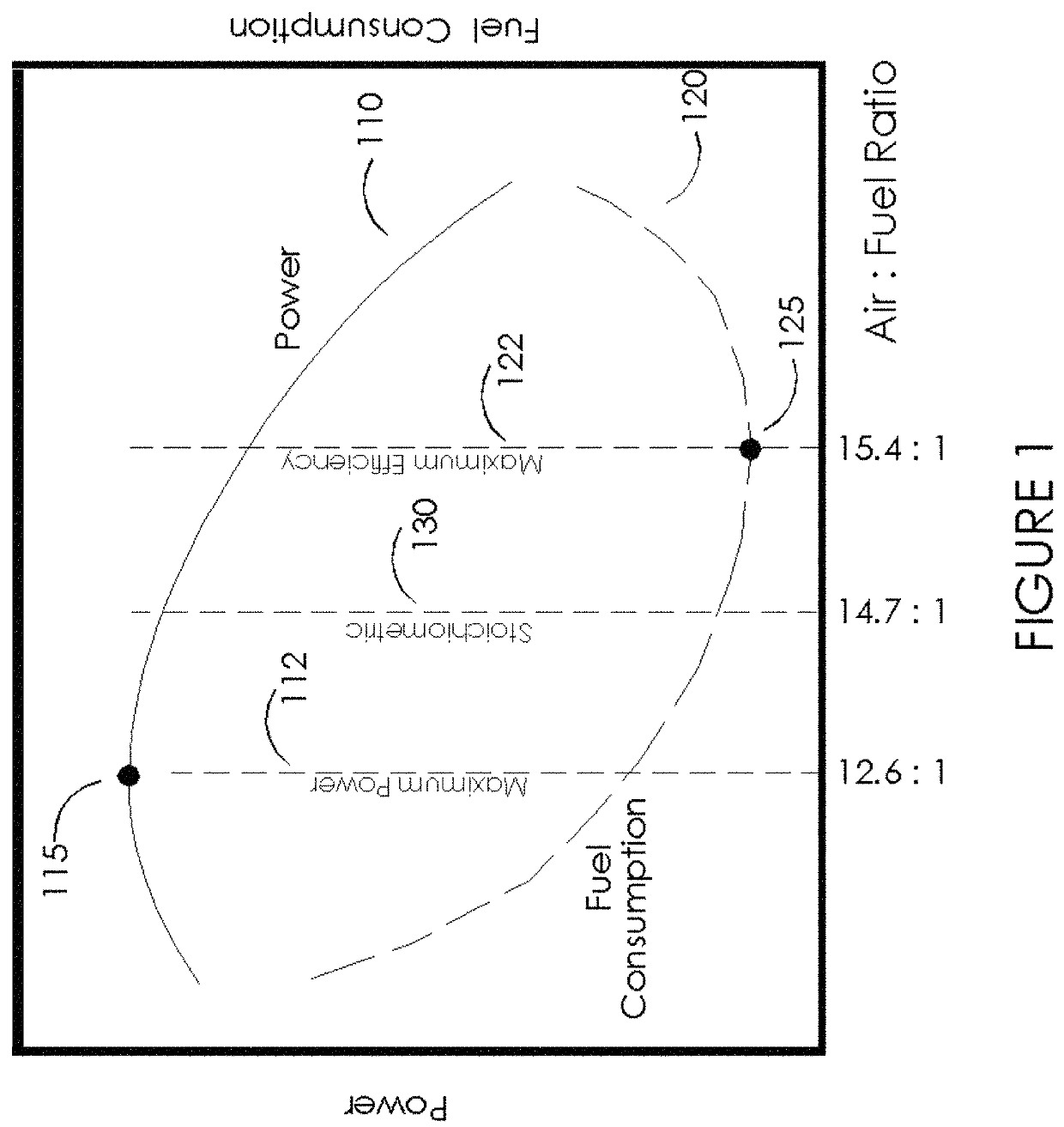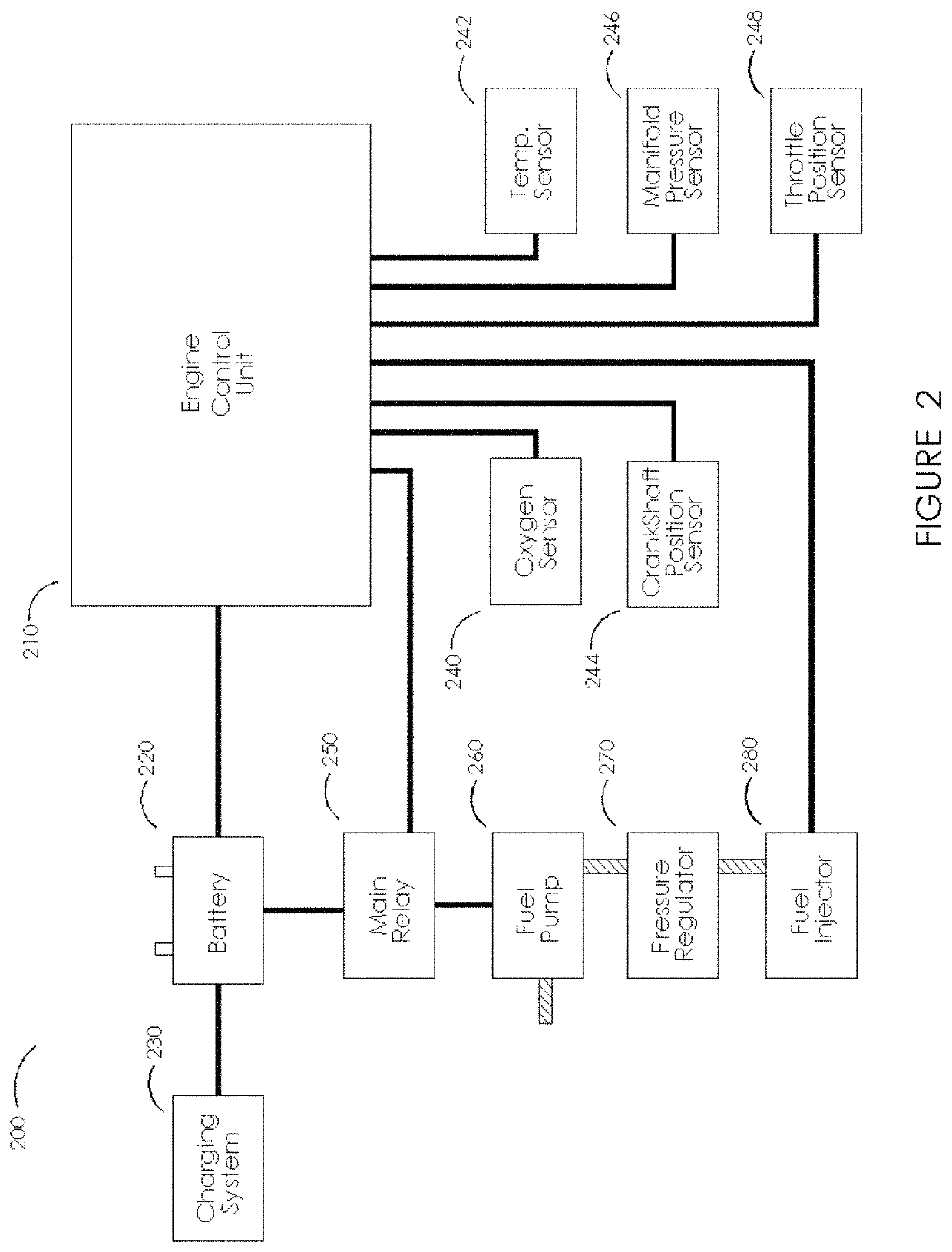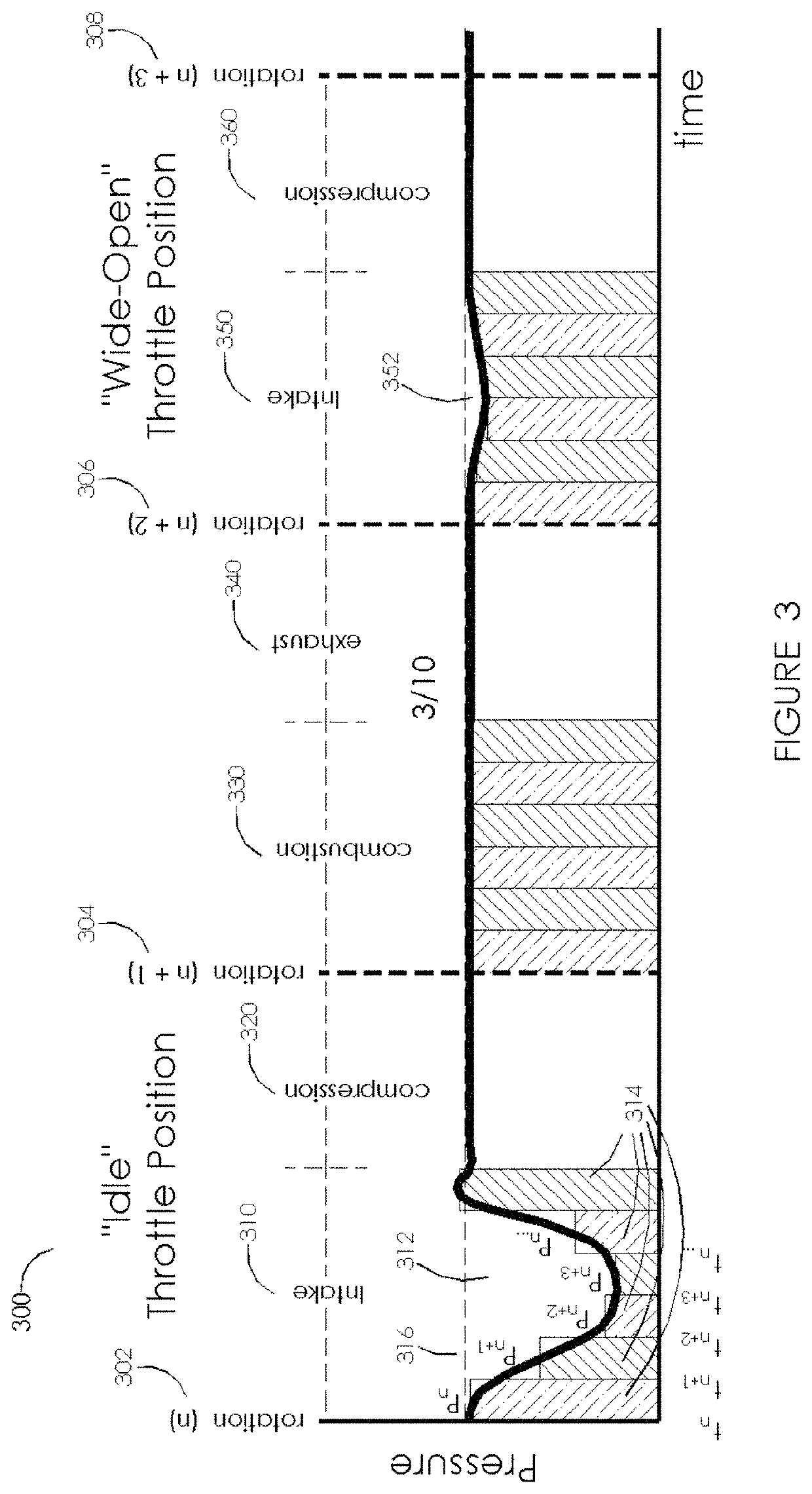Air-fuel metering for internal combustion reciprocating engines
a reciprocating engine and air-fuel technology, applied in the direction of combustion engines, electric control, speed sensing governors, etc., can solve the problems of waste heat that creates no engine power, slow combustion, or incomplete, or both, and reduce power output. or the effect of excess pollution
- Summary
- Abstract
- Description
- Claims
- Application Information
AI Technical Summary
Benefits of technology
Problems solved by technology
Method used
Image
Examples
Embodiment Construction
[0039]In one aspect, the invention aims to provide for all the benefits of EFI, but at system costs no more than—and preferably less than—products using carburetors for fuel metering. In one embodiment, the invention provides a system for metering air and fuel that uses software to implement the functions of at least some mechanical elements found in carburetors. In one embodiment, systems of the present invention employ new engine state measurement metrics as logical inputs to a logic unit operating (e.g., as software and / or firmware) in a processor such as a microprocessor or field programmable gate array (FPGA). Systems and methods of the present disclosure are lower in cost, simpler to physically configure, and more accurate and reliable than mechanical carburetors.
[0040]In one embodiment, the invention combines the elements of fuel pump and injector into a single subsystem which can operate at reduced pressures compared to existing EFI systems, providing for AFR management with...
PUM
 Login to View More
Login to View More Abstract
Description
Claims
Application Information
 Login to View More
Login to View More - R&D
- Intellectual Property
- Life Sciences
- Materials
- Tech Scout
- Unparalleled Data Quality
- Higher Quality Content
- 60% Fewer Hallucinations
Browse by: Latest US Patents, China's latest patents, Technical Efficacy Thesaurus, Application Domain, Technology Topic, Popular Technical Reports.
© 2025 PatSnap. All rights reserved.Legal|Privacy policy|Modern Slavery Act Transparency Statement|Sitemap|About US| Contact US: help@patsnap.com



